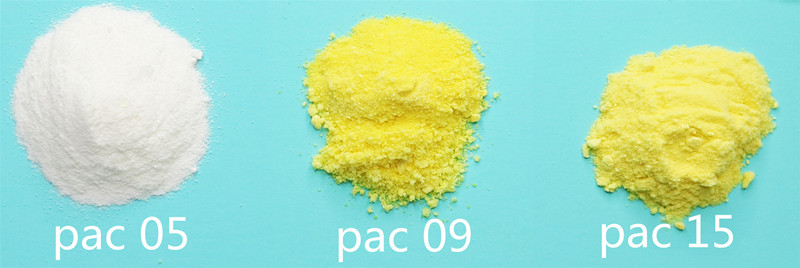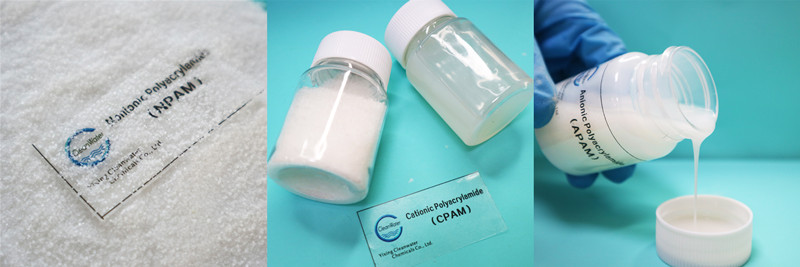Xu Darong 1,2, Zhang Zhongzhi 2, Jiang Hao 1, Ma Zhigang 1
(1. Beijing Guoneng Zhongdian energy conservation and Environmental Protection Technology Co., Ltd., Beijing 100022; 2. China University of Petroleum (Beijing), Beijing 102249)
Abstract: in the field of wastewater and waste residue treatment, PAC and PAM have been widely used as common flocculants and coagulant aids. This paper introduces the application effect and research status of pac-pam in different fields, briefly describes the understanding and views of different researchers on the combination of pac-pam, and comprehensively analyzes the application requirements and principles of pac-pam under different experimental conditions and field conditions. According to the content and analysis results of the review, this paper points out the internal principle of pac-pam applied to various working conditions, and points out that the combination of PAC and PAM also has defects, and its application mode and dosage need to be decided according to the specific situation.
Keywords: polyaluminium chloride; Polyacrylamide; Water treatment; Flocculation
0 Introduction
In the industrial field, the combined use of polyaluminium chloride (PAC) and polyacrylamide (PAM) to treat wastewater and similar wastes has formed a mature technology chain, but its joint action mechanism is not clear, and the dosage ratio for different working conditions in various fields is also different.
This paper comprehensively analyzes a large number of relevant literature at home and abroad, summarizes the combination mechanism of PAC and PAC, and makes comprehensive statistics on various empirical conclusions in combination with the actual effect of PAC and PAM in various industries, which has guiding significance for further research in related fields.
1. Domestic application research example of pac-pam
The crosslinking effect of PAC and PAM is used in all walks of life, but the dosage and supporting treatment methods are different for different working conditions and treatment environments.
1.1 domestic sewage and municipal sludge
Zhao Yueyang (2013) and others tested the coagulation effect of PAM as a coagulant aid to PAC and PAFC by using the method of indoor test. The experiment found that the coagulation effect of PAC after PAM coagulation was greatly increased.
Wang Mutong (2010) and others studied the treatment effect of PAC + PA on domestic sewage in a town, and studied the COD removal efficiency and other indicators through orthogonal experiments.
Lin yingzi (2014) et al. Studied the enhanced coagulation effect of PAC and PAM on algae in water treatment plant. Yang Hongmei (2017) et al. Studied the treatment effect of combined use on kimchi wastewater, and considered that the optimal pH value was 6.
Fu peiqian (2008) et al. Studied the effect of composite flocculant applied to reuse water. By measuring the removal effects of impurities such as turbidity, TP, COD and phosphate in water samples, it is found that the composite flocculant has a good removal effect on all kinds of impurities.
Cao Longtian (2012) and others adopted the method of composite flocculation to solve the problems of slow reaction rate, light flocs and difficult to sink in the water treatment process in Northeast China due to low temperature in winter.
Liu Hao (2015) et al. Studied the treatment effect of composite flocculant on the difficult sedimentation and turbidity reduction suspension in domestic sewage, and found that adding a certain amount of PAM flocculate while adding PAM and PAC can promote the final treatment effect.
1.2 printing and dyeing wastewater and papermaking wastewater
Zhang Lanhe (2015) et al. Studied the coordination effect of chitosan (CTS) and coagulant in the treatment of papermaking wastewater, and found that it was better to add chitosan
The removal rates of COD and turbidity were increased by 13.2% and 5.9%.
Xie Lin (2010) studied the effect of PAC and PAM combined treatment of papermaking wastewater.
Liu Zhiqiang (2013) and others used self-made PAC and PAC composite flocculant combined with ultrasonic to treat printing and dyeing wastewater. It was concluded that when the pH value was between 11 and 13, PAC was first added and stirred for 2 min, and then PAC was added and stirred for 3 min, the treatment effect was the best.
Zhou Danni (2016) and others studied the treatment effect of PAC + PAM on domestic sewage, compared the treatment effect of biological accelerator and biological antidote, and found that PAC + PAM was better than biological treatment method in the removal effect of oil, but PAC + PAM was much better than biological treatment method in water quality toxicity.
Wang Zhizhi (2014) et al. Studied the treatment method of treating papermaking middle stage wastewater by PAC + PAM coagulation as part of the method. When the dosage of PAC is 250 mg / L, the dosage of PAM is 0.7 mg / L, and the pH value is nearly neutral, the COD removal rate reaches 68%.
Zuo Weiyuan (2018) and others studied and compared the mixed flocculation effect of Fe3O4 / PAC / PAM. The test shows that when the ratio of the three is 1:2:1, the treatment effect of printing and dyeing wastewater is the best.
LV sining (2010) et al. Studied the treatment effect of PAC + PAM combination on middle stage wastewater. The research shows that the composite flocculation effect is the best in acidic environment (pH 5). The dosage of PAC is 1200 mg / L, the dosage of PAM is 120 mg / L, and the cod removal rate is more than 60%.
1.3 coal chemical wastewater and refining wastewater
Yang Lei (2013) et al. Studied the coagulation effect of PAC + PAM in coal industry wastewater treatment, compared the residual turbidity under different ratios, and gave the adjusted dosage of PAM according to different initial turbidity.
Fang Xiaoling (2014) and others compared the coagulation effect of PAC + Chi and PAC + PAM on refinery wastewater. They concluded that PAC + Chi had better flocculation effect and higher COD removal efficiency. The experimental results showed that the optimum stirring time was 10 min and the optimum pH value was 7.
Deng Lei (2017) et al. Studied the flocculation effect of PAC + PAM on drilling fluid wastewater, and the COD removal rate reached more than 80%.
Wu Jinhua (2017) et al. Studied the treatment of coal chemical wastewater by coagulation. PAC is 2 g / L and PAM is 1 mg / L. the experiment shows that the best pH value is 8.
Guo Jinling (2009) et al. Studied the water treatment effect of composite flocculation and considered that the removal effect was the best when the dosage of PAC was 24 mg / L and PAM was 0.3 mg / L.
Lin Lu (2015) et al. Studied the flocculation effect of pac-pam combination on emulsified oil containing wastewater under different conditions, and compared the effect of single flocculant. The final dosage is: PAC 30 mg / L, pam6 mg / L, ambient temperature 40 ℃, neutral pH value and sedimentation time for more than 30 min. Under the most favorable conditions, the COD removal efficiency reaches about 85%.
2 conclusion and suggestions
The combination of polyaluminium chloride (PAC) and polyacrylamide (PAM) has been widely used in all walks of life. It has great potential in the field of wastewater and sludge treatment, and its industrial value needs to be further explored.
The combination mechanism of PAC and PAM mainly depends on the excellent ductility of PAM macromolecular chain, combined with Al3 + in PAC and – O in PAM to form a more stable network structure. The network structure can stably envelope other impurities such as solid particles and oil droplets, so it has excellent treatment effect for wastewater with many kinds of impurities, especially for the coexistence of oil and water.
At the same time, the combination of PAC and PAM also has defects. The water content of the formed flocculate is high, and its stable internal structure leads to higher requirements for secondary treatment. Therefore, the further development of PAC combined with PAM still faces difficulties and challenges.
Post time: Oct-09-2021



